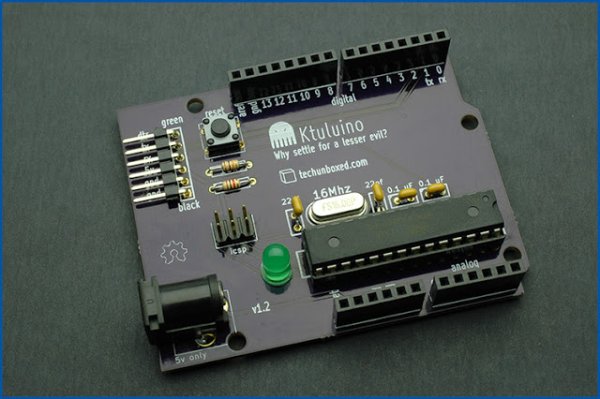Arduino clones are ubiquitous. A quick web search or a look at any electronics hobbyist website will turn up some kind of Arduino-like microcontroller board. Studies have shown that the absolute last thing the world needs is another Arduino clone that adds nothing or very little to existing designs.
One might surmise that these are the exact reasons why someone should never design another Arduino clone, yet here is Ktuluino.
There’s nothing original or particularly compelling about the Ktuluino. The name even has “ino” added to the end which has become so overused that it’s often painful and cringe inducing. With seemingly everything going against it, why would someone make something like this? The answer is… this board was an exercise in PCB design. I need stuff to practice on, and although there’s nothing revolutionary about this board, it is practical. Who can’t use another Arduino, or three?
There are some good things about the Ktuluino. It’s relatively inexpensive, easy to build, compatible with tons of Arduino shields, and it has a Great Old One silk-screened on the board. If you need a few really cool Arduinos, you can order the boards from OSH Park, or download the Gerbers from Github and have boards made. For build instructions and a bill of materials see below. If you want to design your own Arduino clone, see the Ktuluino schematic and search the web. There’s a ton of information and open source designs out there.

